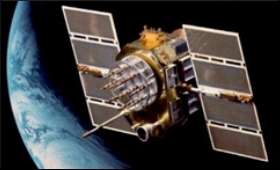|
|
|

|
India set for breaking new space horizons
|
|

|
|
| Top Stories |
 |
|
|
|
LT. -GEN PJS PANNU | 06 Jul, 2020
India has taken a historic stride towards opening up its space sector
for private participation with the creation of IN-SPACe. I have met many
exuberant youngsters in the past with eyes set on space who
unfortunately could not walk through the system in the absence of a
transparent policy framework. The initiative of our Hon'ble Prime
Minister in bringing in a 'new space regime' has laid a solid foundation
for India to multiply its capabilities in space by several fold. This
new body would play a role of a guide for space entrepreneurs. Existing
policies are being suitably tweaked to become more accommodative and
inclusive, and less ambiguous. This makes it easier for the companies to
obtain licenses and participate in end-to-end space activities.
ISRO,
has always been a high achiever and remains the most credible R&D
establishment. However, expecting our premier space R&D organization
to simultaneously handle the responsibilities of NASA, FCC, Boeing, and
SpaceX simply isn't feasible. Limited manpower and budget leaves little
capacity to either do business or support business. Opening up
'facilities to be shared with the private sector is in line with global
best-practices to help spur innovation and reduce the capital-intensive
and high fixed-cost nature of the space business for the industry.
With
this change, ISRO's large talent pool and world class infrastructure
would be made available to the private players that would attract
investments and also bring innovators to synergise efforts with ISRO.
India spends currently approximately $ 1.6 billion on space annually, 6x
lower than China and more than 30 times lower than US. The
privatisation of space is likely to enhance India's revenue and spend
contribution in space, not only making it a major revenue earner but
also providing quality jobs.
India has a huge reservoir of
talent, currently over 50 startups are set to launch operations in India
with a potential not only to bring large revenues but also technology.
India is also one of the few countries having a space institute (Indian
Institute of Space Science and Technology, Trivandrum). However, being a
restricted domain, most passouts found their future abroad. Now, this
pool of talented and qualified engineers shall work for India. This is a
major initiative towards making India truly self-reliant (Atmanirbhar).
It
was essential for India to open the space sector for private players to
meet the demand for space-based applications such as satellite-based
remote sensing and data connectivity. This would allow India to digitize
several industries and sectors that operate in rural and remote areas.
Industry 4.0 applications, such as IoT connectivity over satellite, were
also gated as they lacked the enabling infrastructure and open/fair
policy. This reform will heavily contribute to creating smart villages,
that benefit from both connectivity and space-based services for
farming, water management and disaster prevention.
National
Security is largely dependent on surveillance, navigation and
communication proficiency of the nation. Military needs C4I2STAR
capability to have a technological edge over adversaries and also bring
in the necessary operational superiority. The use of data, networked and
secure communications, AI applications and cross-platform compatibility
would now be possible with the space revolution that the country has
triggered. DRDO has rapidly built capability to provide state-of-the-art
R&D in the field of Defence Space Applications.
They even
demonstrated their capability in anti-satellite missions. While the
majority of defence application development may still remain under the
DRDO domain, availability of private industry for defence needs
certainly spares the government resources to engage in more critical
missions. DRDO has established itself as a leader in missile technology,
it is now set to take strides towards defence space.
Similarly,
ISRO would be free from mundane activities of being a space service
provider but now would engage in advanced research, in achieving
missions that are truly path-breaking in technology and in exploration
of space that would be necessary for India to be a credible space power.
|
|
|
| |
|
|
|
|
|
|
|
|
|
|
|
|
|
|
| |
| Customs Exchange Rates |
| Currency |
Import |
Export |
US Dollar
|
₹91.25
|
₹89.55 |
UK Pound
|
₹122.85
|
₹118.85 |
Euro
|
₹107.95
|
₹104.3 |
| Japanese
Yen |
₹59 |
₹57.1 |
| As on 29 Dec, 2025 |
|
|
| Daily Poll |
 |
 |
| What is your biggest hurdle to scaling right now? |
|
|
|
|
|
| Commented Stories |
 |
|
|
|
|
|
| |
|